A Memory Worth Repeating: Chasing Rainbows at Dollywood
There are many reasons to invest in a trip to Dollywood―roller coasters, funnel cakes, hammered dulcimers, bald eagles, having your picture made in a giant rocking chair, great gift shops, glass blowing, gnomes, and one of the most personal museum experiences you can ever expect to have.
In 1986, Dollywood opened at the site of what had been, since 1976, Silver Dollar City, Tennessee. Silver Dollar City (really hard to say fast) was forever embedded in my childhood amusement park memory with my beloved Dogpatch USA in northwest Arkansas, home to Li’l Abner, Daisy Mae, and such rides as Hairless Joe’s Kickapoo Barrel and Barney Barnsnell’s Skunk Works, both of which I was too scared to ride. Both Silver Dollar City and Dogpatch were in road-trip-with-kids-distance away from New Orleans, and both traded in the corncob pipe, hillbilly, and hokum mythos.
Though Dogpatch USA closed in 1993 and has remained largely nonoperational ever since, Dollywood is now going strong in its thirtieth season and claims to be Tennessee’s largest ticketed attraction with an average of 2.5 million visitors annually. Crafts, rides, and live entertainment are year-round park features, and Dollywood’s Splash Country waterpark operates every summer.
Like many museum nerds (or museum professionals), I often spend vacations sniffing out museums. This included a Christmastime cabin stay in the Great Smoky Mountains with a planned museum visit to Cooter’s Place, the Dukes of Hazard Museum in Gatlinburg, Tennessee. But being a lifelong Dolly Parton fan, inspired by 9 to 5, having a mother who was a member of the Kenny Rogers Fan Club, and attending my first mega-concert at the New Orleans Superdome featuring Kenny Rogers and Dolly in the “Islands in the Stream” era, I had always wanted to visit Dollywood.
Lucky for me there are two museums on the Dollywood property with a couple of annex experiences as well, including Dolly’s Home-on-Wheels, her former tour bus. The two main sites are the Southern Gospel Music Hall of Fame & Museum and the Chasing Rainbows Museum. Sadly I needed so much time to chase rainbows that the run-through of the Southern Gospel Music Hall of Fame & Museum was just enough to catch the animatronic gospel choir. The Dollywood website gives this teaser to the Chasing Rainbows Museum: “What does an entertainment legend do with countless awards, elaborate costumes and priceless artifacts? If you’re Dolly, you share them with your fans in this state-of-the-art interactive museum.”
Dollywood’s Chasing Rainbows Museum tells Dolly’s rags-to-riches life story. Its message is clear―that you should chase your rainbow, follow your dreams, and that it is possible to go from rags to riches just like Dolly. This can be a little depressing if you are chasing your dreams and not getting anywhere, but the message is sincere and she means you! She believes in you and will always love you, which she tells you in several places throughout the museum.
The Chasing Rainbows Museum opens, as many attractions at the park and many of Dolly’s other projects do (her audio recording of her highly recommended autobiography My Life and Other Unfinished Business, for instance), with a personal message to the viewer (or reader) from Dolly herself. In the museum, you come face to virtual face with a hologram of Dolly. Dollywood makes liberal use of holograms, and our museum Dolly was the second one I encountered that day, having already seen hologram Dolly as the Ghost of Christmas Past in Dollywood’s A Christmas Carol (her accent being explained by claiming she was from Southern London). Holograms have allowed Dolly to fulfill another of her dreams—being able to personally greet each and every visitor to Dollywood. The museum hologram Dolly who greets you at the Chasing Rainbows Museum sets the tone for the entire experience. You meet her in Dolly’s Attic, the coolest assembly of Dolly Parton memorabilia you could ever imagine, some handmade by her fans and all collected by Dolly―paintings, quilts, pillows, dressing room signs, and movie set chairs, not to mention toilet paper roll covers that look like Dolly Parton. Hologram Dolly delivers her message: “Everything you see here in this exhibit was part of my journey, and there’s certainly a lot of valuable stuff.” (My boyfriend from Mississippi said that stuff is a five-syllable word coming from Dolly.) Hologram Dolly goes on, “What is important, are all the memories that this building holds, just like that old song, “These are my precious memories . . .” Then Dollygram gets around to the real meat of the message, “Well, we all have our own museum. I bet you have a special drawer of things that you kept to remind you of special moments or a whole wall filled with photos of family and friends. Well, it’s fun to hang on to those special memories, because sometimes when you look back, it actually helps you see better.”
Some early highlights of Dolly’s memory drawer include the coat of many colors. The actual coat that Dolly’s mother made that inspired her hit song is displayed along with Porter Wagoner’s laundry receipt on which Dolly first penned the lyrics. The coat sits among a recreation of the Parton family’s mountain home, a replica of Greene’s Rolling Store peddler’s bus from Dolly’s childhood, a chapel replica of the House of Prayer complete with the Parton family Bible, and a one-room schoolhouse with a chalkboard featuring the message “Dream More. Learn more. Care More. Be More.” Throughout the exhibits Dolly constantly addresses viewers with bits of inspiration. It’s a little like stepping into Dolly’s self-help museum or like listening to the accidental radio-show host and therapist Dolly plays in Straight Talk.
The artifacts show years of careful collecting surrounding Dolly’s life, such as the medical bag used by the doctor who delivered Dolly; his fee was a sack of cornmeal. As the years go by, we move on with Dolly to big wigs; glitzy costumes (including the rhinestone-encrusted suits worn by Porter Wagoner); movie props such as Dolly’s outfits and a re-creation of her desk from 9 to 5; outfits worn by Dolly as Truvey Jones “glamour technician” in Steel Magnolias; and her choir robe from Joyful Noise. There are rooms full of costumes. One impressive piece is a quilt sewn by Dolly’s Aunt Dora Valentine using some of Dolly’s stage outfits.
Dolly’s work to promote early childhood literacy and the “magic that books can create,” the Imagination Library is also featured in an exhibit. Dolly started the program twenty years ago in East Tennessee, inspired by her father’s inability to read and because “the seeds of dreams are found in books.” She has since distributed more than 70 million free books to children across the United States, Canada, and the United Kingdom.
Unlike my many other museum visits, my trip to the Chasing Rainbows Museum didn’t have me hunting for mistakes in labels or sloppy artifact mounts because I was absorbed. I couldn’t help but love it because all of the talk of butterflies and rainbows—Dolly’s symbols of hopes and dreams—is sincere. It feels genuine. Despite all of the holograms, the wigs, the makeup, the plastic surgery, and the boobs, it’s the most un-fake experience you can have.
In Dollywood’s Mission and Core Values Statement, the mission is listed simply as “Creating Memories Worth Repeating®.” One museum attraction that I read about after my visit but somehow did not actually see (even though we spent roughly two hours in the museum) was the interactive “Wear Dolly’s Wigs” where you can digitally try on “select Dolly wig styles.” In my repeat visit, I’ll chase my rainbow straight to “Wear Dolly’s Wigs.” I can’t wait! She inspires me to tell a better story and to be a better curator of my own life.
*All photos by Kim Guise


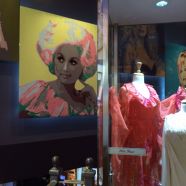





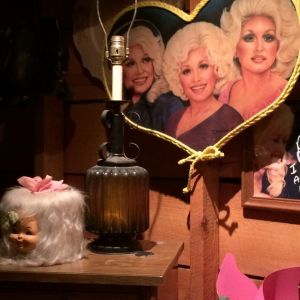
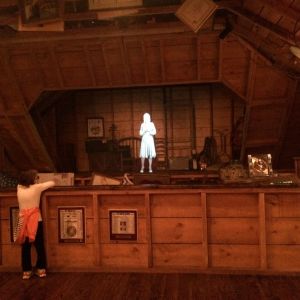
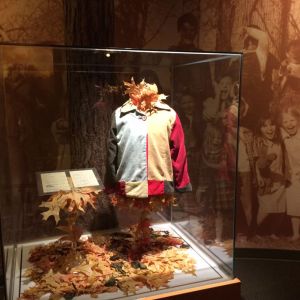
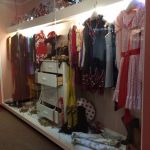
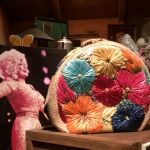
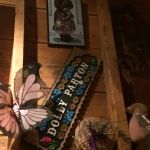
This is a delight. Good to be reminded that Dolly loves us! Jogs memories of my own childhood visits with family to another Smokey Mts attraction, Ghost Town in the Sky.
Wonderful write-up!